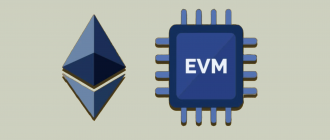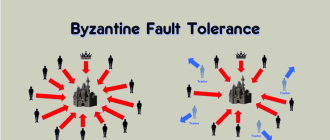In the digital age, where privacy and data security are increasingly prioritized, decentralized applications (DApps) are gaining significant importance. DApps leverage blockchain technology to offer a novel approach to software development and operation. Unlike traditional applications, which are managed and controlled by centralized entities, DApps operate on a decentralized network. This decentralization makes them resistant to censorship and external control.

What Are Decentralized Applications (DApps)?
DApps are applications or programs that run on a blockchain platform, functioning autonomously without the need for centralized oversight. They utilize smart contracts to automate operations and secure transactions. While traditional apps are governed by a single company or organization, DApps are distributed across a network of nodes, ensuring their independence and resistance to censorship.
DApps vs. DEXs and DeFi
The distinction between DApps, decentralized exchanges (DEXs), and decentralized finance (DeFi) lies in their applications. DEXs are a specific type of DApp that enables users to trade cryptocurrencies without a centralized intermediary. On the other hand, DeFi encompasses a broad range of financial services—such as lending and insurance—provided in a decentralized manner.
The Emergence of DApps
The first DApps emerged with the creation of Ethereum in 2015, a platform that introduced the use of smart contracts. Ethereum greatly expanded the capabilities of blockchain technology, allowing developers to create a diverse array of applications within a unified network.
How Decentralized Applications (DApps) Work
Decentralized applications (DApps) harness blockchain technology to create secure and reliable systems that operate without centralized control. This innovative approach to application development utilizes a blockchain network made up of numerous nodes (computers), each holding a copy of all transactions and smart contracts ever executed on the network.
Smart Contracts
Smart contracts are programs stored on the blockchain that automatically execute, control, or document legally relevant events or actions according to the terms of the contract, without any third-party involvement. Written in specialized programming languages like Solidity for Ethereum, these contracts activate automatically when their conditions are met. Actions triggered by smart contracts can include transferring cryptocurrencies or tokens between addresses, performing calculations, or automatically updating data on the blockchain.
Consensus Mechanisms
To maintain data integrity and security, DApps rely on consensus mechanisms such as Proof of Work (PoW) or Proof of Stake (PoS). These mechanisms enable network nodes to agree on the state of the blockchain, like confirming transactions, thereby preventing fraud such as double spending.
User Interface and Interaction
DApps typically feature a user interface developed with web development languages (HTML, CSS, JavaScript) that interacts with the blockchain through specialized libraries like Web3.js. These libraries allow the web application to send transactions to the blockchain, invoke smart contracts, and retrieve data from the blockchain. Users manage their assets through cryptographic wallets (e.g., MetaMask) that facilitate secure authorization and transaction signing.
Deployment and Updates
Once deployed on the blockchain, smart contracts become immutable, necessitating thorough testing prior to deployment. Updates to existing smart contracts can be implemented through new contract versions and data migration, often requiring complex logistics and community involvement.
Overall, DApps offer a high level of security and reliability by utilizing blockchain and smart contracts, though they demand deep knowledge from developers in cryptography, network technologies, and programming.
Key Features of Decentralized Applications (DApps)
Decentralized applications (DApps) represent a unique category of software that leverages blockchain technology. Let’s explore the main technical and operational features that distinguish DApps from conventional applications.
Decentralized Control
Operating on a blockchain, DApps distribute data and control processes among a network of independent participants (nodes). This eliminates a single point of failure and negates the need for a central governing authority, making the applications resistant to external control and censorship.
Transparency of Operations
All modifications within DApps are recorded on the blockchain, where they are accessible for verification by any network participant. This high level of transparency allows users to verify each action within the application without needing to trust a third party.
Autonomous Management through Smart Contracts
DApps utilize smart contracts to automate processes, manage assets, and execute the business logic of the application. These contracts execute automatically based on predefined conditions, eliminating the possibility of fraud, errors, or interference in the application’s processes.
Resistance to Censorship and External Interference
Thanks to the decentralization of data and processes, DApps naturally resist censorship. Governments or other entities cannot easily block access to DApps or restrict their functionality, making them ideal for applications that require a high degree of autonomy and freedom.
Platform Independence
Many DApps are developed to be platform-independent, enabling them to operate across different blockchains. This interoperability increases their accessibility and resilience to changes in technological infrastructure.
Economic Self-Sufficiency
DApps often incorporate built-in economic models that use tokens or cryptocurrencies to incentivize user actions and fund further development. This creates an ecosystem where users are not only participants but also active contributors and beneficiaries.
These features make decentralized applications a powerful tool for creating a new type of digital services, offering significant advantages in terms of security, reliability, and transparency compared to traditional centralized systems.
Platforms and Projects Utilizing DApps
Decentralized applications (DApps) are deployed across various blockchain platforms, each offering unique capabilities and characteristics for developers and users. Below is an overview of leading platforms and some notable DApps developed on their foundations.
Ethereum
Ethereum is the pioneer and most widely-used platform for creating DApps, thanks to its smart contract technology and support for the Solidity programming language.
- Uniswap: A decentralized exchange (DEX) that allows users to trade cryptocurrencies without intermediaries, using liquidity pools instead of traditional order books.
- MakerDAO: A platform that stabilizes the value of its USD-pegged token DAI through a series of dynamic smart contracts and governance mechanisms.
- Compound: A protocol that enables users to earn interest on their cryptocurrencies by providing them to a common liquidity pool, which other users can borrow against collateral.
Binance Smart Chain
BNB Smart Chain offers compatibility with the Ethereum Virtual Machine (EVM), providing high performance and low transaction costs.
- PancakeSwap: A popular decentralized exchange on Binance Smart Chain that uses an automated market-making (AMM) model to provide liquidity for trading pairs.
- Venus: An algorithmic money market and synthetic stablecoin platform that allows users to borrow and lend cryptocurrencies using various assets as collateral.
Solana
Solana stands out for its high transaction speed and low cost, thanks to its unique Proof of History (PoH) consensus mechanism.
- Serum: A decentralized exchange built on Solana that offers centralized speed and efficiency with decentralized control and security.
- Raydium: A liquidity protocol and AMM that interacts with Serum’s central order book to provide enhanced liquidity and faster trading operations.
Cardano
Cardano uses a unique two-layer architecture and the Ouroboros Proof of Stake consensus mechanism to enhance scalability and sustainability.
- SundaeSwap: A decentralized exchange on Cardano that allows users to trade and earn interest on their tokens through liquidity mechanisms.
- AdaSwap: Another AMM on Cardano, offering innovative financial tools and opportunities for liquidity creation.
These platforms and products showcase the diversity and innovative potential of the DApp sphere, providing users with new ways to interact with financial assets in a decentralized environment.
Pros and Cons of Decentralized Applications (DApps)
Decentralized applications (DApps) offer several advantages that make them appealing to users and developers, but they also come with a set of limitations and challenges. Here’s a detailed look at the pros and cons of using DApps.
Pros of Decentralized Applications
- Absence of Centralized Control: DApps operate independently of any single controlling authority, reducing the risks of censorship, interference, and service shutdown.
- Increased Security: Utilizing blockchain technology, data in DApps is distributed across the network, enhancing their resistance to hacking attacks and data falsification.
- Transparency: All transactions and operations within DApps are open and verifiable, fostering a high level of trust and transparency for users.
- Fault Resistance: The distributed nature of the blockchain ensures that applications continue to operate even if individual nodes fail.
- Community Governance: Many DApps incorporate governance mechanisms that allow users to vote and directly influence the development and updates of the applications.
Cons of Decentralized Applications
- Scalability Issues: Many blockchain networks, including Ethereum, face performance limitations that can lead to slower transactions and higher fees.
- Complexity of Use: The interfaces and interaction mechanisms of DApps may not be intuitive enough for new users, limiting their widespread adoption.
- Dependency on Cryptocurrencies: Many DApps require the use of cryptocurrencies for transactions, which can deter users unfamiliar with digital assets.
- Limited User Base: Since DApps often target niche audiences, they may suffer from a lack of sufficient active users to ensure dynamic development and sustainability of the ecosystem.
- Challenges with Updates: Due to the immutability of the blockchain, updating smart contracts can be a complex and risky process that requires careful planning and testing.
These pros and cons underscore the importance of carefully weighing the opportunities and limitations before implementing or using DApps in various projects and initiatives.
Future Prospects of Decentralized Applications (DApps)
The development of decentralized applications (DApps) is accelerating, and they are expected to play an even more significant role in the digital economy in the near future. Several key trends and technological innovations are facilitating this progress.
Enhancing Scalability
Scalability remains a primary challenge for DApps, particularly in networks like Ethereum. Second-layer solutions such as Plasma and Rollups, along with the transition to Proof of Stake (PoS) in the Ethereum 2.0 upgrade, are aimed at improving network performance. These technologies promise to reduce transaction delays and costs, making DApps more accessible and efficient for a larger user base.
Improving User Interfaces
To broaden the audience for DApps, it is crucial to enhance user interfaces to ensure they are more convenient and user-friendly. Developers are actively working on creating more intuitive and accessible interfaces that could rival the convenience of traditional digital applications.
Expanding Integration and Synergy
The integration of DApps with other technologies and platforms, such as the Internet of Things (IoT), artificial intelligence (AI), and machine learning (ML), opens up new opportunities for automation and optimization in various industries, including manufacturing, healthcare, and logistics.
Penetration into Traditional Industries
DApps are beginning to penetrate traditional industries, offering decentralized alternatives for financial services, insurance, real estate, and many other sectors. This includes everything from decentralized insurance and asset management to document handling and supply chain management.
Standardization and Regulation
As DApps evolve and become more widely implemented, the importance of standardization and appropriate regulation becomes increasingly apparent. Transparent rules and standards will facilitate the integration of DApps into large-scale economic and social systems while ensuring user protection.
Development of the Ecosystem and Community
A growing community of developers and users of DApps fosters innovation and the emergence of new applications. Collaborations among developers strengthen the ecosystem, while educational resources and platforms for knowledge exchange accelerate learning and attract new participants.
These developmental prospects indicate that the future of DApps is likely to be dynamic and promising, with the potential to radically alter many aspects of our interaction with technology and each other in the digital space.
Conclusion
DApps represent a new model of software that has the potential to radically transform many aspects of our society through their decentralization, security, and transparency. The advancement of this technology could lead to a new era in the digital economy, where every user has the ability to control their data and finances without intermediaries.







